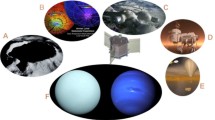Abstract
An investigation of cold fusion of deuterium was performed by electrolyzing heavy water in a cell containing a palladium cathode while monitoring levels of tritium and neutron-capture gamma rays. No activity was detected that would indicate a sustained fusion reaction had taken place. Activities that were observed can be attributed to electrolytic enrichment and a normal cosmic-ray induced background.
Similar content being viewed by others
References
S. Pons, M. Fleischmann,J. Electroanal. Chem., 261 /1989/ 301.
H.F. Buttlar, W.F. Libby,J. Inorg. and Nucl. Chem., 1 /1955/ 75.
R.M. Brown, W.E. Grummitt,Can. J. Chem., 34 /1956/ 220.
W.W. Bowmann, K.W. Macmurdo,Atomic Data and Nucl. Data Tables, 13 /1974/ 202.
Author information
Authors and Affiliations
Rights and permissions
About this article
Cite this article
Faller, S.H., Holloway, R.W. & Lee, S.C. Investigation of cold fusion in heavy water. Journal of Radioanalytical and Nuclear Chemistry Letters 137, 9–16 (1989). https://doi.org/10.1007/BF02164553
Received:
Accepted:
Issue Date:
DOI: https://doi.org/10.1007/BF02164553




